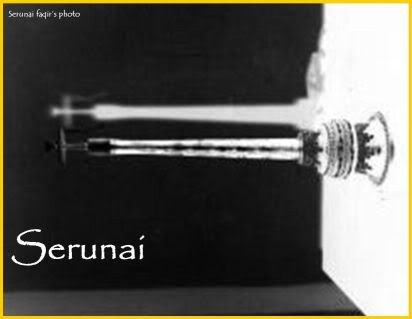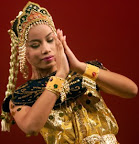Sejenis alat muzik tradisional yang termasuk dalam golongan aerofon. Ia menggunakan sistem pernafasan bersambung bagi menghasilkan irama mengikut paluan gendang yang tertentu. Biasanya ia dimainkan mengikut jenis persembahan seperti silat, Mek Mulung, Mak Yong, Terinai, Wayang kulit Kelantan, Wayang Gedek (Kedah), Gendang Peribumi (Keling), Menora, Main Peteri dan sebagainya. Namun serunai yang terdapat di Malaysia ada berbeza2 mengikut negeri. Misalnya di Kedah serunainya berbunyi langsing dan agak pendek sedikit jika dibandingkan dengan serunai di Kelantan dan Terengganu. Kebanyakkan serunai mempunyai 7 lubang atas dan 1 lubang bawah. Di Perlis pula serunainya mempunyai 6 lubang atas dan 1 lubang bawah. Sementara di Negeri Sembilan serunainya hanya mempunyai 4 lubang atas tanpa lubang bawah. Pipitnya biasanya diperbuat dari sejenis daun iaitu dari pokok Lontar atau Tai.
Serunai is one of the Malay traditional music instrument which are widely used in most Malaysian's traditional music dan martial art. In can be divided according to the state, which played in different styles. This instrument are played in continous breathing (without stopping). Reed are made from the leaves of "Lontar's" tree. As u can hear from my background music, this kind of serunai can be seen in Perlis (one of the state in Malaysia). Next time, i'll bring the other state's serunai.

Serunai
General information:
Another example of cultural diffusion!
Throughout Islamic-influenced countries in eastern Europe, northern Africa and much of central Asia, you'll find an ancient double reed instrument with a long, conical wooden body and a flaring bell. Used as a solo instrument or in ensembles, there are several sizes and many distinctive playing techniques associated with each region. Characteristically, these instruments have a distinctively loud, piercing nasal sound created by the vibrating reeds, somewhat similar to the sound of an oboe which is a much later European descendent. Many of these nonwestern instruments use a reed made from a flattened stalk of grass, unlike the harder cane reeds of western oboes.
The serunai and its relatives, including the zurna (Turkey), kangling (Tibet),sorna (Afghanistan), suona (China) and raita (Morrocco), have been played at temple festivals, outdoor processionals, games, weddings and community dances. Prior to this century, the zurna was also associated with Turkish Janissary (or military) band processionals, along with kettledrums. And since the late 1800s, similar instruments have been used in Cuba and other Latin American countries, brought by Chinese immigrants who worked in the sugar cane plantations.
Extract from :
http://www.si.umich.edu/chico/instrument/pages/serunai_gnrl.html
Serunai is one of the Malay traditional music instrument which are widely used in most Malaysian's traditional music dan martial art. In can be divided according to the state, which played in different styles. This instrument are played in continous breathing (without stopping). Reed are made from the leaves of "Lontar's" tree. As u can hear from my background music, this kind of serunai can be seen in Perlis (one of the state in Malaysia). Next time, i'll bring the other state's serunai.

Serunai
General information:
Another example of cultural diffusion!
Throughout Islamic-influenced countries in eastern Europe, northern Africa and much of central Asia, you'll find an ancient double reed instrument with a long, conical wooden body and a flaring bell. Used as a solo instrument or in ensembles, there are several sizes and many distinctive playing techniques associated with each region. Characteristically, these instruments have a distinctively loud, piercing nasal sound created by the vibrating reeds, somewhat similar to the sound of an oboe which is a much later European descendent. Many of these nonwestern instruments use a reed made from a flattened stalk of grass, unlike the harder cane reeds of western oboes.
The serunai and its relatives, including the zurna (Turkey), kangling (Tibet),sorna (Afghanistan), suona (China) and raita (Morrocco), have been played at temple festivals, outdoor processionals, games, weddings and community dances. Prior to this century, the zurna was also associated with Turkish Janissary (or military) band processionals, along with kettledrums. And since the late 1800s, similar instruments have been used in Cuba and other Latin American countries, brought by Chinese immigrants who worked in the sugar cane plantations.
Extract from :
http://www.si.umich.edu/chico/instrument/pages/serunai_gnrl.html






No comments:
Post a Comment